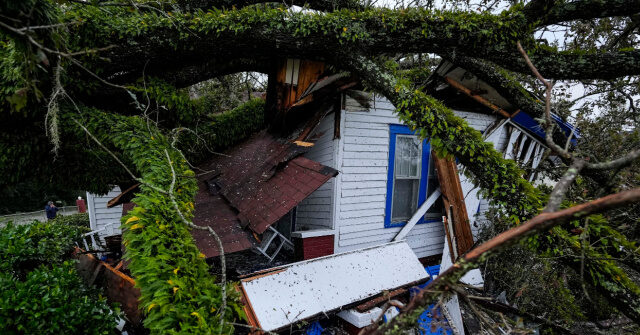Hurricane Helene’s damage to the Appalachian Trail is “historic” and may take years to repair, the trail’s conservation organization said.
The 2,200-mile-long trail that stretches from Georgia to Maine typically attracts millions of visitors each year, as they hike and stop at the many towns along the way, the New York Times reported.
Following the devastation from the storm and flash floods that claimed the lives of more than 220 people across six states, the Appalachian Trail Conservancy (ATC) is now discouraging people from hiking the first 800 miles northbound.
“Hurricane Helene has left behind tremendous destruction in the southern Appalachian Trail (A.T.) landscape and surrounding communities,” the conservancy said, adding that the group’s first priority is to ensure that their own staff and members are safe.
According to the group, Helene is the “largest natural disaster in terms of geographic footprint” to impact the trail in its 100-year history.
“While we are eager and anxious to tackle the work necessary to restore sections of the A.T. impacted by Helene, we ask for patience,” said ATC president and CEO Sandi Marra.
Unreal! Entire Building Swept Away by Helene Flooding Smashes into Electrical Pole
Chris Faber/The Times Bar & Coffee /TMX
“Critical infrastructure—water, electricity, and internet—must be fully restored and roads must be cleared for the ATC and our partners to evaluate the Trail’s conditions. Once we can safely access the A.T., we will identify the sections and features that need immediate attention and put a call out for volunteers to help restore the Trail.”
In collaboration with the National Park Service, the U.S. Forest Service, and other state and local partners, the ATC will be working to restore the trail — but for now, the ATC is advising hikers and visitors to stay away from the trail from where it starts at Springer Mountain in northern Georgia to the Rockfish Gap in Virginia.
“The scope and scale is historic,” Marra told the Times. “I cannot imagine it will be normal in 2025.”
Even if the trail was fully safe, AT hiker Gary Sizer told the publication that “nobody” can hike the trail without the small towns that serve as pit-stops along the way.
“Nobody can hike the Appalachian Trail without these communities,” Sizer said. “The whole experience is a series of three-to-five day backpacking trips. You get to a town, you meet some people. Hikers form a community.”
Suggesting that hikers choose other trails outside of the disaster zone, Marra said, “You have people who are literally struggling for water and food. Why strain a system that is already broken?”



